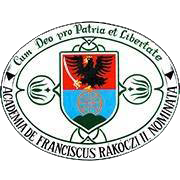Please use this identifier to cite or link to this item:
https://dspace.kmf.uz.ua/jspui/handle/123456789/2370| Title: | A magyar keresztény terminológia bizánci rítusú szláv elemei |
| Other Titles: | Slavic elements of Byzantine rite in the Hungarian Christian terminology |
| Authors: | Zoltán András Золтан Андраш Zoltan Andras |
| Keywords: | etimológia;szláv jövevényszavak;bizánci térítés |
| Issue Date: | 2020 |
| Publisher: | Magyar Nyelvtudományi Társaság |
| Type: | dc.type.article |
| Citation: | In Magyar Nyelv: a Magyar Nyelvtudományi Társaság folyóirata. 2020. 116. évfolyam, 3. szám. pp. 275-285. |
| Series/Report no.: | A Magyar Nyelvtudományi Társaság folyóirata;116. évfolyam, 3. szám |
| Abstract: | A magyar köznyelvi szókincs idegen eredetű elemei közül a
legnagyobb tételt szláv jövevényszavaink teszik ki (Vermes 1941, Papp 1967:
521, vö. Zoltán 2017a: 1), természetes tehát, hogy a szláv eredetű szavak keresztény terminológiánkban is számosak és fontosak. Elég, ha néhány alapvető
terminusra utalunk: kereszt, keresztel, keresztyén (ebből később a kereszt beleértésével keresztény); apáca, apát, barát ’szerzetes’, pap; pokol; szent, szentel;
szerda, csütörtök, péntek, szombat; zarándok, vecsernye, zsolozsma. Ide tartozik
néhány ma már főleg csak biblikus összefüggésben használt szó és szólás is: hálát
ad, malaszt, nyoszolya, parázna, szövétnek. Abstract. The 10th-century Byzantine conversion of Hungarians was carried out through Slavic mediation, as there were many Slavic-Hungarian bilinguals among the Hungarians settled in the midst of Slavic population, and Slavic-Greek bilingual missionaries were easy to find in the Balkan provinces of the Byzantine Empire (e.g. in Macedonia). Most of the early Slavic borrowings to Hungarian came from the Slavic substrate of the Carpathian Basin (Pannonian Slavic), and this is also true of Christian terminology. Due to the high degree of similarity between 10th-century Slavic dialects, it is difficult to separate terms locally borrowed from Pannonian Slavs from those introduced by the Byzantine missionaries speaking Slavic in Hungary. However, there are some words and expressions of Balkans origin (hálát ad ‘give thanks’, karácsony ‘Christmas’, pitvar ‘porch’, formerly ‘limbo, edge of Hell’, etc.) that could hardly have been found in Pannonian Slavic; these were most probably brought by the Byzantine missionaries and spread among the Hungarians. |
| Description: | https://epa.oszk.hu/00000/00032/00087/pdf/EPA00032_magyar_nyelv_2020_3.pdf |
| URI: | https://dspace.kmf.uz.ua/jspui/handle/123456789/2370 |
| ISSN: | 0025–0228 (Print) 1588–1210 (Online) |
| metadata.dc.rights.uri: | http://creativecommons.org/licenses/by-nc-nd/3.0/us/ |
| Appears in Collections: | Zoltán András |
Files in This Item:
| File | Description | Size | Format | |
|---|---|---|---|---|
| Zoltan_A_A_magyar_kereszteny_terminologia_bizanci_ritusu_2020.pdf | In Magyar Nyelv: a Magyar Nyelvtudományi Társaság folyóirata. 2020. 116. évfolyam, 3. szám. pp. 275-285. | 600.63 kB | Adobe PDF | View/Open |
This item is licensed under a Creative Commons License





